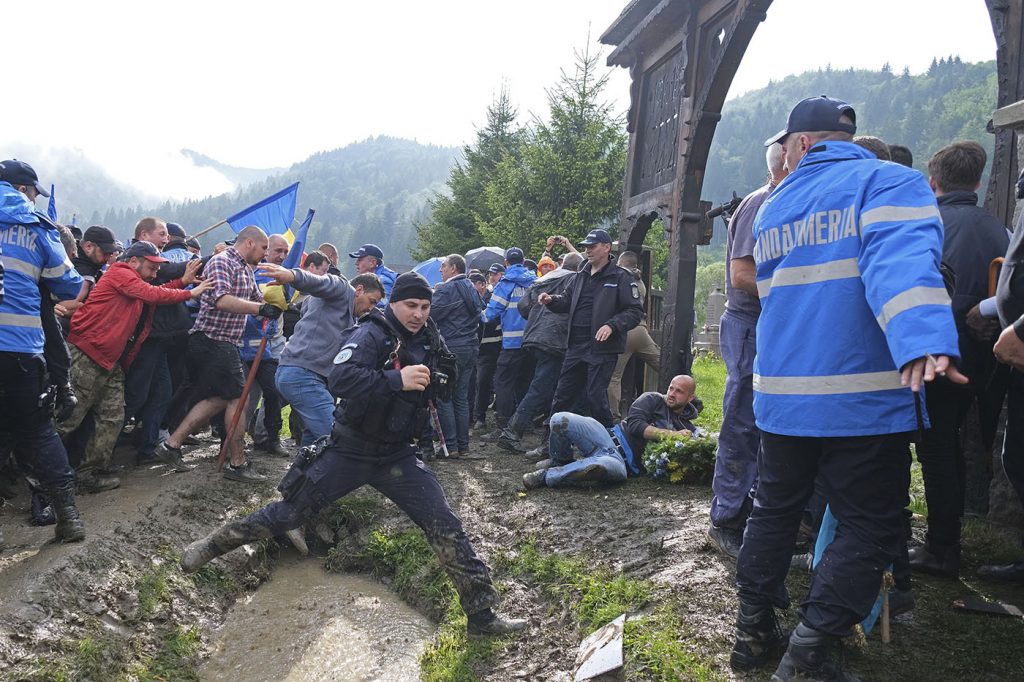The lawsuit based on the unsolved border dispute between the Hargita (Harghita) County’s Csíkszentmárton (Sânmartin Ciuc) and the Bákó (Bacău) County’s Dormánfalva (Dărmănești) was initiated by Csíkszentmárton earlier this year and later transferred to the Bákó County Court in August. Csíkszentmárton representatives objected to this move, fearing that it would influence the court’s decision, and wanted a neutral court assigned to the case instead. Now, this is exactly what is going to happen. Last week, the case was taken away from the Bákó Court as well, and a neutral location for the lawsuit will be decided by the Supreme Court of Cassation and Justice.
Neither the Hargita nor the Bákó County Court has jurisdiction to adjudicate on the case, which is intended to define the border between Csíkszentmárton and Dormánfalva and — as the settlements’ borders also represent the border between Hargita and Bákó counties — the border between the two neighboring counties.
The lawsuit, which would also decide which city owns the Úz Valley military graveyard, was initiated by Csíkszentmárton this past spring at the Hargita County Court. At the first hearing, the judge approved an application submitted by Dormánfalva claiming that the court is not authorized to try the case; this resulted in the court deciding to pass the case to the Bákó County Court.
Now, the representatives of Csíkszentmárton have done the same, saying that the Bákó County Court is also not authorized to make a decision and asked the local court to let the Supreme Court of Cassation and Justice choose a neutral court for the case. At its September 24 hearing, the Bákó County Court approved this request, and a neutral court will later be assigned by the Supreme Court.
Background
As Transylvania NOW previously reported, the border dispute was unilaterally and illegally “solved” in a series of illegal actions orchestrated by Dormánfalva Mayor Constantin Toma. But the Hargita County-based settlement’s legal borders were already clearly documented; furthermore, a law passed in 1968 defined the border between Csíkszentmárton and Dormánfalva, placing the Úz Valley military graveyard in Hargita County and under Csíkszentmárton’s administration.
At the core of the border dispute is a cadastral mapping from 1998 initiated by the Hargita County Land Registry and involving both settlements. For reasons yet unknown, the Úz Valley was left off the analysis job sheet.

Csíkszentmárton objected to the cadastral survey at the time, but the Land Registry claimed they had limited time to finish the survey, which is why they did not include the Úz Valley. As a result, they gave Dormánfalva a legal loophole that allowed them to annex the graveyard and the 77 hectares of land. This has led to other issues since Csíkszentmárton is a Hungarian village and Dormánfalva is a Romanian one. For example, last June an angry Romanian crowd even broke into the cemetery, surging past a picket of praying ethnic Hungarians. Now, this ongoing border dispute between the two settlements (and, as a result, Hargita and Bákó counties) is set to go to court but has no court nor date to do so.
Title image: Úz Valley military graveyard on May 15, 2019. (Photo: Attila Szoó)